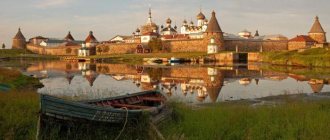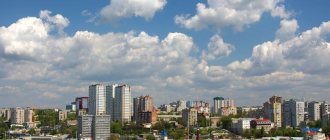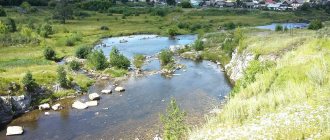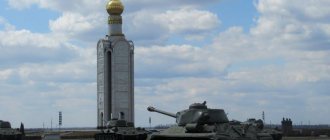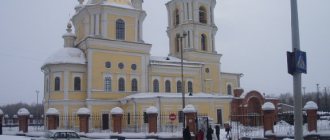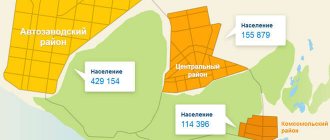1236 km from the capital on the banks of the Northern Dvina not far from the White Sea there is a city with the title of the city of military glory Arkhangelsk . It was founded by decree of Ivan the Terrible. The year of foundation of Arkhangelsk is officially recognized as 1584, but the first Slavic settlements in these places appeared in the 12th century.
A year after its founding, Arkhangelsk became a major center of trade relations. At the time when fairs were held here, even in the capital there was a decline in trade. In the 16th and 17th centuries, wooden buildings predominated in Arkhangelsk, and therefore the city quite often suffered from fires.
In 1693, construction of a shipyard began on Solombala Island, and in 1694, in the presence of Peter I, the first ship was launched. In 1702, a victorious battle took place with a Swedish squadron, and Arkhangelsk was named the victorious city.
It is noteworthy that after the victory over the Swedes, Peter decided to limit trade through Arkhangelsk. He did this in order to give St. Petersburg the status of the country's main commercial and military port. The restrictions were in effect until 1762, when Catherine II lifted them and thereby brought life back to the city. However, the status of the main port remained with St. Petersburg.
In the 19th century, Arkhangelsk became a scientific center, because it was here that numerous expeditions to explore the Arctic began. The task of developing the northern territories of our country is still relevant today
Arkhangelsk has its own anthem and its own coat of arms. The city's coat of arms depicts Archangel Michael with a shield and sword, who overthrows the devil.
Climate of Arkhangelsk
Part of the territory of the Arkhangelsk region belongs to the Far North zone, while the rest of this territory is equated to this zone. The climate in Arkhangelsk is moderate, directly influenced by the northern seas, air masses from the Atlantic Ocean and a small amount of sunlight and heat. It is characterized by short and rather cold summers and long, moderately frosty winters. The average annual temperature is +1.3 degrees, the average temperature of the coldest month (January) is -13.8 degrees, and the average temperature of the warmest month (July) is +16.3 degrees.
The weather in Arkhangelsk is unstable and can change several times a day. There are many more rainy days a year than sunny days. About 607 mm of precipitation falls annually.
It is noteworthy that under the influence of Siberian air, the air temperature in winter can drop to -30 degrees, and under the influence of hot air that penetrates the region from the Kazakh steppes, in the summer the temperature rises above +30 degrees, but despite this, in the summer Frosts are common. The absolute temperature maximum was recorded in Arkhangelsk on July 13, 1972 and amounted to +34.4 degrees, and the temperature minimum was recorded on January 8, 1885 and amounted to -45.2 degrees.
The most significant military events associated with the city
On August 25, 1942, the sailors of the icebreaker "Alexander Sibiryakov", which was part of the icebreaker detachment of the White Sea Military Flotilla, accomplished a feat. Having entered into an unequal battle with the heavy German cruiser Admiral Scheer in the Kara Sea, the sailors, at the cost of their lives, saved a caravan of ships from destruction, preventing the destruction of several polar stations.
The sailors of the Northern Shipping Company vessels assigned to Arkhangelsk showed the highest resilience and heroism. During the war years, the shipping company lost 14 ships and more than 300 sailors while delivering strategic cargo. At the cost of their lives, Arkhangelsk sailors and Red Navy men, together with their allies, ensured the delivery of 4.2 million tons of cargo to Arkhangelsk, half of which was cargo sent by the allies under Lend-Lease. Among them are 2,312 aircraft, 3,428 tanks, 819 armored vehicles, 717 guns, 49 torpedo boats. It is appropriate to recall that by November 1942, about 900 tanks and a little more than a thousand aircraft were concentrated on the Soviet fronts to launch a counterattack at Stalingrad.
Ecology
The environmental situation in Arkhangelsk cannot be called favorable. The Plesetsk cosmodrome has a significant negative impact, and in the Mezensky, Kholmogorsky, Pinezhsky and Leshukonsky regions, launch vehicle stages are being completely reset.
However, pollution from comic objects is far from the only one. The region has well-developed industrial production, which pollutes the air with its emissions. Moreover, the level of air pollution is considered high, since the atmosphere contains substances such as benzopyrene, formaldehyde, methyl mercaptan, hydrogen sulfide, nitrogen and sulfur dioxides and others. An important factor in air pollution is automobile public and personal transport of citizens, the number of which is growing more and more every year.
The Northern Dvina basin is subject to regular pollution from the pulp and paper mills (Arkhangelsk, Kotlas, Solombalsky). Compounds of heavy metals and, in some places, phenols and petroleum products enter the water.
The White Sea coast is regularly polluted by discharges from industrial enterprises (Zvezdochka, Sevmash, thermal power plant).
The problem of storing and neutralizing industrial and household waste is especially acute in the region. Regional authorities admit that most of the existing landfills do not meet modern environmental safety standards. The number of unauthorized landfills increases every year, which leads to soil, air and groundwater pollution.
In turn, local governments, in order to solve environmental problems, develop and implement programs to prevent further pollution and restore already contaminated sites.
Population of Arkhangelsk
Arkhangelsk ranks 50th in our country in terms of the number of people living in the region. According to the latest data, the city has a population of 348,343, with 5% more women than men.
The dynamics of population changes cannot be called stable. So, if before the Second World War there was a population increase, then during the war the number of inhabitants decreased significantly. From the late 50s until the 90s of the last century, there was a significant increase in the number of city residents from 256 thousand to 416 thousand people. Since the beginning of the 90s, there has been a downward trend in the number of Arkhangelsk residents, with interruptions in 2008 and 2010.
As for age groups, it should be noted that the majority of the region’s population are people of the middle and older age groups; every eighth resident of the region is over 65 years of age. Due to the fact that the birth rate is steadily declining, the proportion of elderly people is increasing every year.
A slight increase in the population in the region in some years is observed not due to natural growth, but due to the migration of villagers who go to Arkhangelsk to study and in search of a better life, as well as thanks to visitors from the countries of the former USSR.
Museum of Artistic Development of the Arctic named after A.A. Borisova
Museum of Artistic Development of the Arctic named after. A.A. Borisova
Arkhangelsk
The Museum of Artistic Exploration of the Arctic is named after the first polar painter Alexander Borisov - the artist participated in Arctic expeditions and painted the Far North from life in the late 19th - early 20th centuries. The museum’s first exhibition, “Artist of Eternal Ice,” opened in 2002.
Today, five museum halls are open to visitors. Here you can get acquainted with the history of polar expeditions, see maps, ship models, navigation instruments and travel notes, learn about the life and work of Alexander Borisov and his student Ilya Vylka.
Famous people
The Arkhangelsk region has become the homeland for many talented people and politicians. In particular, researcher M.A. was born here. Lavrov, Major General V.L. Abramov, Major General A.M. Ilyin, architect A.I. von Gauguin, shipbuilder, scientist N.I. Kuteynikov, explorer E.P. Khabarov, sculptor F.I. Shubin and others.
The life of Patriarch Nikon, who took monastic vows at the Solovetsky Monastery, and the ataman and leader of the uprising S.T. is inextricably linked with the Arkhangelsk region. Razin, who in 1652 visited the Solovetsky Monastery for pilgrimage purposes and, of course, M.V. Lomonosov - scientist, historian, artist, who was born and lived in the Arkhangelsk province.
In the Arkhangelsk region, people who are associated with the navy of our country lived and worked, including A.A. Petrovich - physicist, academician, founder of Russian nuclear energy; S.N. Kovalev – academician, inventor, designer; D.F. Ustinov - Minister of the USSR, People's Commissar.
The region was glorified by such figures as:
- N.N. Priorov - academician;
- N.P. Laverov – academician, Arctic researcher;
- I.V. Meshchersky - scientist, physicist;
- T.A. Gaidar – writer and journalist;
- F.E. Shishigin – artist, director;
- V.V. Alentova - actress, people's artist;
- F. Abramov - Soviet writer and many others.
Education
In Arkhangelsk, 54 secondary schools have been opened, the Northern (Arctic) Federal University named after. M. V. Lomonosov, Northern State Medical University, branch of the State Maritime Academy named after. S. O. Makarova, branch of the St. Petersburg State Institute of Culture, Institute of Management, Branch of the Modern Humanitarian Academy, Institute of New Forms of Education (INFO) and others.
A travel portal for those who travel or are planning to travel in Russia and abroad.
Economy of the city of Arkhangelsk
Currently, there are about 7.7 thousand enterprises operating in Arkhangelsk, and 2.2 thousand of them can be classified as medium and large. The leading role in the economy of the region belongs to the forestry and wood processing industries. Thus, about 40% of the total volume of industrial production falls on products produced by enterprises in this industry. Arkhangelsk supplies pulp, lumber, cardboard, and paper to other regions of Russia.
In addition, Arkhangelsk is one of the largest suppliers of fish to the country’s domestic market.
Transport hubs play an important role in the economy of the region, since it is in Arkhangelsk that large highways and railways connect, and cargo ports operate in the city. The M8 highway passes through Arkhangelsk, along which timber, wood products and fish are transported to the central part of the country.
Merits of the city's rear
The contribution of the Arkhangelsk region to the achievement of Victory is determined not only by the participation of its residents in hostilities. Their labor achievements are very significant; let us briefly recall some unforgettable deeds of the workers of the Arkhangelsk rear.
During the pre-war five-year plans, the region turned into a developed industrial region of the country. In 1940, it supplied the national economy with almost 16 million cubic meters of wood, 3.3 million cubic meters of lumber; Pulp and paper production, railway and sea transport received significant development.
In a short time, the region's economy was rebuilt on a war footing. The main workforce at the enterprises became women, teenagers, and pensioners, who replaced thousands of workers who went to the front. In the first three months alone, 5,200 women came to Arkhangelsk enterprises.
Sawmills received urgent orders for skis, sleds, ammunition caps, airfield and engineering equipment. During the war years, sawmills provided the front with over 3,200 thousand cubic meters of lumber, 15 million sets of special packaging, almost 20 thousand drag sledges and much more. Workers in the timber industry provided the country with more than 25 million cubic meters of wood and produced about 1,700 thousand guns and 360 thousand ski blanks.
Pulp and paper industry enterprises have mastered the production of gunpowder pulp and special grades of paper. The industry provided the country and the front with over 124 thousand tons of cellulose and 25 thousand tons of paper.
Ship repair enterprises in Arkhangelsk and Molotovsk converted civilian ships for military purposes and repaired warships and submarines. The team of ship repairers at Krasnaya Kuznitsa mastered the production of mortars, mines, grenades, and machine guns. He produced 213 snowmobiles, about 80 thousand mine bodies, and many other products.
The war radically changed the life of the northern village. Thousands of collective farmers went to defend their Motherland. They were replaced by women and teenagers who did everything to plow the fields, harvest the crops on time, and give the front more meat, oil, and grain.
At that time, the names of the Shenkur tractor driver A. Revina, the Kholmogory milkmaids A. Korobova, P. Yakovleva and many others were known throughout the region. During the war years, rural workers handed over to the state about 90 thousand tons of grain, 180 thousand tons of potatoes, more than 27 thousand tons of meat, and over 180 thousand tons of milk. Reindeer herders of the Nenets District sent over 4,000 reindeer to the Karelian Front to transport military cargo and wounded soldiers.
The workers of the Arkhangelsk seaport wrote a bright page in the chronicle of the war. In the first days of the war, the port received the responsible task of organizing the reception and processing of strategic cargo supplied under Lend-Lease from the USA and England. In the shortest possible time, the railway line Left Bank - the port of Economy was built, gantry cranes were installed, and dredging work was carried out. In winter, carriages were transported along a railway track laid on the ice of the Northern Dvina.
During the war, port workers accepted and promptly processed 332 vehicles, which delivered about two million tons of cargo. 2,312 aircraft, 3,428 tanks, 819 armored vehicles, many guns and other equipment left Arkhangelsk and Molotovsk for the front.
Teams of stevedores headed by N.D. Kuznetsov, M.A. Kolotov, S.A. Yanin, K.A. The Urpins, collapsing from fatigue, did not go home until the ships were completely unloaded.
The Motherland highly appreciated the work of the port workers. By decree of the Presidium of the Supreme Soviet of the USSR dated May 1, 1944, 296 people were awarded orders and medals.
The brave actions of the northern sailors will forever remain in the history of the region. From the first day of the war, the merchant fleet switched to working in a military manner. It was replenished with dozens of transport and fishing vessels transferred to Arkhangelsk from Murmansk, which was located in the zone of active enemy aviation.
The best sailors who had experience working in the Arctic were called up to serve in the fleet: Heroes of the Soviet Union M.P. Belousov and K.S. Badigin, as well as N.P. Annin, I.F. Kottsov, P.A. Ponomarev, N.I. Khromtsov and others.
Transportation of workers for the construction of defense fortifications in Karelia, transfer of military units, delivery of Norilsk and Pechora coal, nickel ore, evacuation of people and equipment from the front line, participation in export-import operations - this is not a complete list of the new tasks that fell on the shoulders of sailors of the North. Each of them involved a risk to life, each required endurance and courage. And on each of them the crews gave their all to the end.
The exploits of the crews of the icebreaker "Lenin" and the steamship "Alexander Sibiryakov", which entered into an unequal battle with the fascist heavy cruiser "Admiral Scheer", the patrol ships "Brilliant", "Passat", "Tuman", which died but did not lower the flag in front of enemy.
Almost 23 million tons of cargo were transported by the fleet of the Northern River Shipping Company. Dozens of its employees have been awarded orders and medals. Among them are captains A.A. Shchukin, M.L. Bryukhov, V.A. Raspopov and many others.
600 thousand centners of fish, so necessary for the front and rear, were obtained by the trawl fleet during the war.
The brave sailors of the Red Banner Northern Fleet and the White Sea Military Flotilla made a worthy contribution to the cause of Victory over the enemy. North Sea sailors destroyed about 260 enemy combat and transport ships, 1,300 aircraft, and provided escort for more than 4,000 transports.
Together with the 14th Army of the Karelian Front, the Northern Fleet stopped the German invaders on the Kola Peninsula. In October 1944, having launched a decisive offensive, the army and navy completely defeated selected German divisions and liberated Northern Norway from the occupiers.
The region's intelligentsia worked side by side with workers, office workers, and field workers during difficult years. Scientists, teachers, teachers, doctors, cultural and artistic workers provided great assistance to the front, trained specialists, participated in the training and education of the younger generation, and inspired people to work and feats of arms.
Health workers had to solve difficult problems. During wartime, Arkhangelsk became the rear hospital base of the Karelian Front.
The best buildings were given over to hospitals; first of all, new standard school buildings in Arkhangelsk, Kotlas, Nyandoma, and Molotovsk were adapted for them. By the end of the first year of the war, there were 31 hospitals with 14,280 beds in the region.
Many graduates of the Arkhangelsk Medical Institute worked as heads of hospitals and senior surgeons in hospitals. G.D. proved themselves to be skillful organizers of hospital services and doctors in those years. Orlov, S.I. Elizarovsky, V.A. Kazmin, N.V. Mikheev, dozens of other doctors and nurses.
One of the manifestations of caring for the wounded was donation, which became widespread during the war years. Donors K.P. saved many lives. Negodyaeva, A.V. Zheleznova, A.S. Sergeeva and many others who donated blood more than 30 times. There were over 17 thousand donors in the region, about 500 of them were awarded the “Honorary Donor of the USSR” badge.
But was the work of school teachers less important at that time? The names of many supporters of public education remain forever in people's memory. Honored school teachers of the RSFSR A.A. left a good mark. Vlasova, A.P. Aksel - director of school No. 37 in Arkhangelsk, T.P. Maltseva from Velsk, F.V. Semakov from the village. Rovdino and many others.
Investments
Favorable geographical location, developed transport network, natural potential, highly qualified personnel, support of local authorities have determined the investment attractiveness of the Arkhangelsk region.
The Arkhangelsk region is called the sea gate of the north of Russia, since the region has access to the sea, and the Arkhangelsk multi-functional port operates all year round and can handle a cargo traffic of about 4.5 million tons.
One of the promising industries in the region is the shipbuilding industry. Shipbuilding enterprises not only fulfill government orders, but also produce civil vessels, as well as equipment for oil production, transportation and refining.
The investment attractiveness of the region was determined by the presence of mineral deposits on its territory, in particular diamonds, oil, gas, zinc, lead, bauxite and gypsum.
The timber industry is also promising. Arkhangelsk forests are considered one of the best in the whole world, since the wood is distinguished not only by its mechanical properties, but also by its environmental cleanliness. It is not surprising that several large pulp and paper mills operate successfully in the region.
A number of investment projects aimed at forest development are currently being implemented in the region. In particular, the authorities provide forest areas for use without competitions and with a 50% discount on rental payments.
To increase the investment attractiveness of the region, local authorities provide investors with tax incentives and also provide them with comprehensive support.
Russian North: borders, history and architecture of the region
The Russian North occupies vast areas in the north of the European part of the country. From the west it is limited by the Sheksna River basin, from the east by Pinega and Vychegda. In the north, the region is washed by the waters of the White and Barents Seas. In the south, the border of the Russian North is conventionally drawn through Vologda. The modern Arkhangelsk region occupies most of this historical and cultural region.
Due to its geographical location, the Russian North is a harsh, sparsely populated and cold region. However, it is not without natural beauty and charm. White nights are considered a unique symbol of the Arctic region - an unusual phenomenon observed in the summer months of the year (June-July). These days, the sun barely hides behind the horizon, turning the dark time of day into just twilight. This phenomenon was perfectly described by Alexander Pushkin in one of his poems: “One dawn is in a hurry to replace another, giving the night half an hour.”
The climatic conditions of the Russian North are unsuitable for traditional agriculture. However, nature has endowed this region with other riches, in particular fish and furs. Since ancient times, strong, energetic and, to some extent, adventurous individuals flocked here, who were not afraid of the local difficulties and dangers. This is how a unique and proud ethnic group was formed that did not experience the hardships of serfdom - the Pomors.
The architecture of the Russian North is no less unique. During the 16th-17th centuries, Old Believers actively moved here, establishing their own communities in the region. Uniquely beautiful examples of sacred architecture have been preserved in Solvychegodsk, Kotlas, and Veliky Ustyug. The famous Russian artist Nicholas Roerich was delighted with the natural and architectural originality of this region.
Enterprises
The forestry industry of Arkhangelsk is represented by the Solombales holding with its parent enterprise Solombalsky Pulp and Paper Mill (production of unbleached pulp) and the largest lumber production enterprise Solombalsky LDK.
The region's mining industry is represented by:
- Severalmaz – diamond mining and cutting;
- Arkhangelskgeoldobycha – oil and gas production;
- Aurora – oil production.
In the field of mechanical engineering, the Solombala Machine-Building Plant operates, which specializes in the production of equipment for logging.
The food industry is represented by:
- ALVIZ – production of alcoholic beverages;
- "Titanium";
- "Moloko" - a milk production plant;
- The trawl fleet is a fish catching enterprise.
In the energy sector, there are thermal power plants and Arkhenergo, which sell thermal and electrical energy.
Construction
Arkhangelsk was built of wood and remained wooden for a long time, which is why it often suffered from fires. The city burned, recovered and burned again.
The peak of housing construction in the city occurred in the early 60s of the last century, which is associated with an increase in allocations for the construction of residential buildings. But, despite the fact that 187 thousand square meters of area were put into operation in 1961, the problem of housing shortage was acutely felt in the city. After a visit to Arkhangelsk N.S. Khrushchev, standard microdistricts began to be built in the city in order to solve the housing problem. Then Lenin Square and Engels Street were built, which is now the main street of Arkhangelsk.
Half a century has passed since the 60s, and the housing problem is still unresolved. Currently, the city authorities are faced with the task of reconstructing the old housing stock, as well as building new ones to resettle citizens from dilapidated and dilapidated housing. The couple came to demolish those standard panel houses that were built during the reign of Khrushchev, because over the 50 years that have passed since their construction, they have already exhausted their resource, we must not forget that they were built primarily as temporary housing.
Cost of housing in Arkhangelsk
The cost of housing in Arkhangelsk, as elsewhere, depends on many factors. The main ones include: city district, number of floors, construction material, type of heating, type of market (primary or secondary housing market).
According to the latest data, the cost of a square meter of housing on the primary market ranges from 21 to 80 thousand rubles per square meter. Let's consider the dependence of the cost of housing on the number of rooms by region.
On the primary market, an apartment in the following areas will cost more:
- A one-room apartment in the Northern region costs 3.4 million rubles;
- Two-room apartment in the same area - 3.9 million rubles;
- A three-room apartment in the same area ranges from 5.8 – 6.1 million rubles;
- The most expensive four-room apartment is located in the Economy area. Its price is 9,489,498 rubles.
By analogy, let’s present a list of the most affordable housing:
- A one-room apartment in the Oktyabrsky district costs 2.3 million rubles;
- Two-room apartment in the Mayskaya Gorka area - 3.02 million rubles;
- A three-room apartment in the same area ranges from 3.2 - 3.5 million rubles;
- The most expensive 4-room apartment is located in the Mayskaya Gorka area. Its price is 4,411,395 rubles.
Thus, the average cost of a square meter by region is distributed as follows (districts are presented in alphabetical order):
- Varavino-Faktoriya - 53.7 thousand rubles per m2;
- Isakogorsky - 21.9 thousand rubles per m2;
- Lomonosovsky - 64.4 thousand rubles per m2;
- Maimaksansky - 29.9 thousand rubles per m2;
- Mayskaya Gorka - 54.3 thousand rubles per m2;
- Oktyabrsky - 62.3 thousand rubles per m2;
- Primorsky - 25.05 thousand rubles per m2;
- Northern - 76.9 thousand rubles per m2;
- Solombalsky - 52.3 thousand rubles per m2;
- Tsiglomensky -35.7 thousand rubles per m2;
- Savings -73.1 thousand rubles per m2;
Districts of Arkhangelsk
The city of Arkhangelsk consists of nine districts:
- Lomonosovsky - considered central, new comfortable housing is being built here, administrative buildings are also located here;
- Oktyabrsky - is considered central, as in Lomonosovsky there are administrative buildings, large shopping centers, and new residential buildings border on dilapidated housing stock;
- Isakogorsky is the outskirts of Arkhangelsk, which is considered undeveloped and dysfunctional; dilapidated wooden houses predominate here;
- Solombala - located on the island of the same name, several city-forming enterprises operate here, and the housing stock is mainly represented by panel high-rise buildings built during the Soviet period;
- Tsiglomensky is the outskirts of Arkhangelsk, considered unfavorable, the buildings here are dilapidated, wooden;
- The northern one is a working outskirts, industrial enterprises are located here, and the housing stock is represented by dilapidated wooden houses with partial amenities;
- Maimaksansky - the outskirts of the city with factories and dilapidated wooden housing;
- Varavino-Faktoriya is an area in which there are industrial enterprises, panel high-rise buildings and dilapidated wooden houses;
- Mayskaya Gorka is a residential area of the city.
The main attraction of the Russian North
250 kilometers northwest of Arkhangelsk are Solovki, an archipelago of six islands covered with forests, lakes and swamps. The main attraction of this archipelago and the entire Russian North is the Solovetsky Monastery.
Back in 1429, the first worship cross was installed on Solovki. A little later, two monks - Herman and Zosima - founded an Orthodox monastery here. At the very beginning, it consisted of just a few nondescript wooden buildings. But by the middle of the 16th century, the Solovetsky Monastery became the spiritual center of the entire Russian North.
For more than two centuries, the monastery also played the role of a prison in which opponents of the tsarist regime languished, and then enemies of Stalin. Many outstanding personalities passed through it: for example, comrades of the rebel Stepan Razin, the last ataman of the Zaporozhye Sich, Pyotr Kalnyshevsky.
Today the Solovetsky Monastery hosts travelers and tourists. By the way, this landmark can also be seen on the 500-ruble banknote.
Sights of the city of Arkhangelsk
Arkhangelsk is called the city of melancholy, cod and boards. You can only answer the question whether this is fair or not if you have been here yourself. Arkhangelsk is the cultural center of Pomorie.
Perhaps the most beautiful place in the city can be called the Northern Dvina embankment, walking along which you can see many interesting sculptural and architectural monuments.
Museum lovers should check out the Northern Maritime Museum, a local history, literary and fine arts museum.
It is worth taking a walk along the central pedestrian street of the city – Chumbarova-Luchinsky Avenue. Ancient wooden buildings are collected here, and the Treskoed restaurant-museum is also located here.
In the Solombala district there is the Santa Claus Village, which welcomes guests not only in winter, but also in summer.
There are theaters and exhibition halls and numerous clubs and discos in Arkhangelsk, and, therefore, everyone will have something to do in this amazing northern city. But the most remarkable place of Malye Korely is one of the most famous open-air museums in the Arkhangelsk region. The territory, covering an area of 140 hectares, is home to vibrant examples of folk art and wooden architecture. This amazing exhibition of northern Russia began to take shape in 1968. Five years later, on the banks of the Northern Dvina River, the museum itself appeared - a pearl of cultural heritage and a quiet place for walks away from the bustle of the city.
Popular message topics
Long-distance running is quite widespread in the world. In every city, in the morning or evening, on the street or stadium, you can meet a running person. This can also be seen in all kinds of films and TV series. People get carried away with the activity
The Laptev Sea is located in the northern part of Russia in the Siberian region and adjacent to the Arctic Ocean. There are many islands in the waters of the sea, while the Laptev Sea is the only sea in Russia
Patriotic education of children is a priority direction of modern educational work in the education system. The mission of reviving cultural culture is entrusted to the development of patriotic feelings among the younger generation

